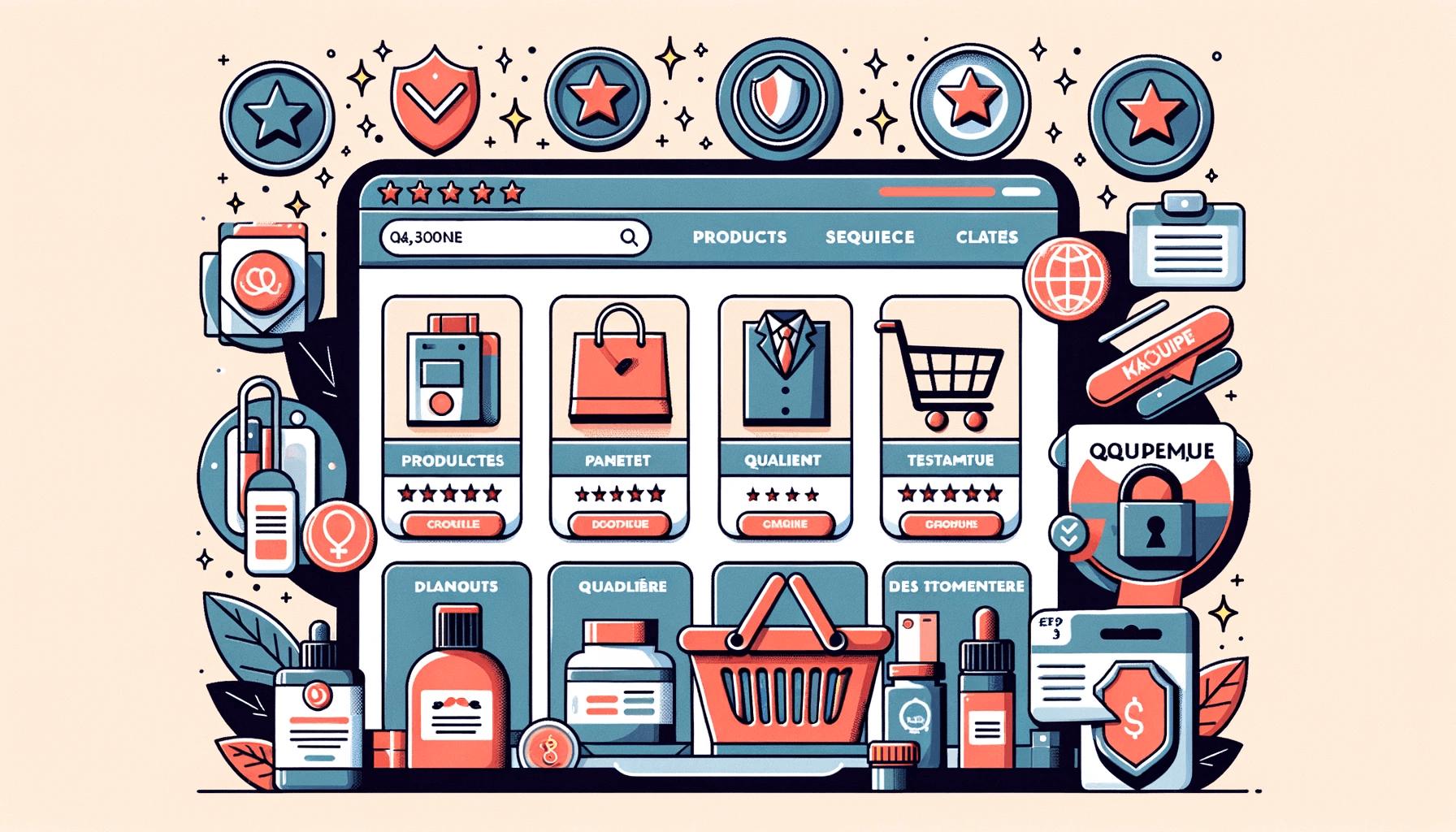Find out why creating a e-commerce website is the best decision for boosting your business. Follow our advice for a high-performance, attractive site.
With the rise of e-commerce, create an online e-commerce site has become a must for any company wishing to develop its presence on the digital market. Now more than ever, consumers are embracing online shopping for its convenience and accessibility. Why wait to take the plunge? Here's why this decision could transform your business and usher in a new era of growth.

What is an online e-commerce site?
An online e-commerce site is a platform that enables a company to sell its products or services directly to consumers via the Internet. Unlike a physical store, it's accessible 24/7, reaching a global audience without geographical barriers. For customers, create an online e-commerce site means offering a convenient, fast and secure shopping experience.
The advantages of creating an online e-commerce site
A global reach
One of the benefits from create an online e-commerce site is the ability to reach a global audience. Unlike a physical store limited to one geographical area, an e-commerce site opens doors to potential customers all over the world. This means more visibility, but also more opportunities for growth.
Lower operating costs
Another advantage is the reduction in fixed costs. Unlike a traditional business, you save on rental costs, maintenance charges and sometimes even personnel. This efficiency means you can reallocate resources to other strategic activities, such as marketing.
Available 24/7
Create an online e-commerce site gives your customers the freedom to shop at any time. This continuous availability maximizes your chances of sales and meets the needs of modern customers, who are often looking for immediacy.
Customer behavior analysis
An e-commerce site offers invaluable access to data on your customers, such as their preferences, purchasing habits and most popular products. This data can be used to personalize your offers, improve your marketing and optimize your overall strategy.
How to create a high-performance online e-commerce site
1. Define your objectives and target audience
Before taking the plunge, clearly identify your objectives Do you want to increase your sales, raise your profile or offer your customers a better experience? Knowing your target audience is also essential to tailoring your site to their needs.
2. Choosing the right e-commerce platform
Several solutions exist for create an online e-commerce sitesuch as Shopify, WooCommerce, PrestaShop or Magento. Compare them according to your needs in terms of customization, costs, inventory management and ease of use.
3. Designing an intuitive user interface
Fluid navigation and attractive design are essential to capture and retain your visitors. Make sure your site is compatible with mobile devices, as a significant proportion of online purchases are made via smartphone.
4. Integrating key functionalities
A good e-commerce site should include :
- A simple, effective shopping cart system.
- Secure payment options.
- Easy inventory management.
- Marketing tools such as promotions and loyalty programs.
5. Search engine optimization (SEO)
To ensure that your site is visible on search enginesoptimize it with relevant keywords such as create an online e-commerce site. Work on your meta tags, write unique descriptions for your products and get the most out of them. backlinks quality.
6. Test and launch your site
Before going live, carry out thorough tests to ensure that everything is working properly: navigation, ordering process, payment options, etc. Once these checks are complete, launch your site and monitor its performance.
Trends to follow for an online e-commerce site
Mobile commerce
With the increase in smartphone purchases, it's essential that your site is mobile-friendly. A design adapted to small screens improves the user experience and boosts your conversions.
Artificial intelligence and personalization
Use artificial intelligence to offer personalized recommendations and improve customer satisfaction. AI-powered tools can also analyze data to predict purchasing trends.
Influence marketing
Collaborating with influencers can increase brand awareness and attract a targeted audience to your site.
Fast, durable delivery
Offer fast delivery options while adopting sustainable practices to meet the expectations of environmentally conscious consumers.
Things to remember
Create an online e-commerce site is an essential strategy for modern companies. It enables you to extend your reach, reduce costs and improve customer relations. By following best practices and staying on top of trends, you can transform your site into a powerful tool for generating revenue and strengthening your brand. So, are you ready to take the plunge and create an online e-commerce site that makes a difference?
Numerous references from prestigious customers, supermarkets, ready-to-wear, major retailers, festivals, photographers, production companies, etc.
You can contact us by email, and a project manager will get in touch with you!
